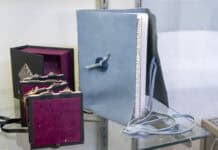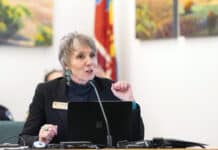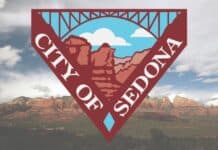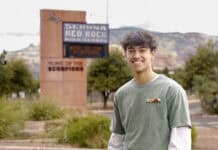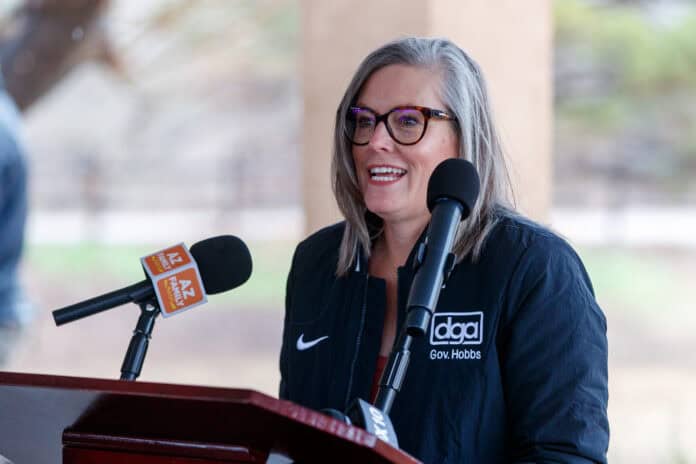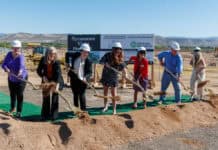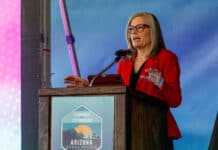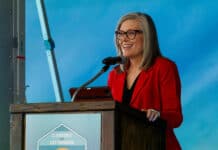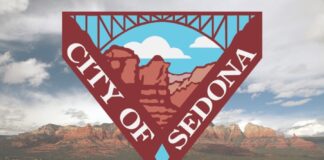Arizona Gov. Katie Hobbs [D] signed a non-binding Shared Stewardship Agreement with the federal government on Thursday, Oct. 10, intended to enable state and federal agencies to collaborate to reduce community wildfire risk.
“Arizona doesn’t have a wildfire ‘season’ anymore,” Hobbs said. “Arizonans are under threat of wildfire 365 days a year, and the threat posed by wildfires grows every year, which means we need all the tools available to combat them. Thousands of state, federal and local partners worked with us to address nearly 2,000 wildfires in Arizona this year.”
The agreement schedules an annual planning meeting between the U.S. Forest Service and the Arizona Department of Forestry and Fire Management to coordinate their efforts on conducting prescribed wildfire burns, fire prevention and post-fire watershed and forest restoration work.
“In 2018, the Forest Service actually announced a new shared stewardship agreement, and we had three distinct strategies that we want to address when that agreement was signed,” Undersecretary for Natural Resources and Environment Homer Wilkes said. “We want to increase the pace and scale of the forest health restoration treatments. We want to identify crossboundary solutions as we identify mutual science-based priorities. And so I’m very pleased … to have a continuing of that type of collaboration and partnership.”
The agreement also expands the acreage of the Forest Service’s Good Neighbor Authority in Arizona, which allows DFFM and the USFS to partner on forestry projects. The 2024 agenda for the program covers 13 states, including, in Arizona, both a project surrounding the Fred Lawrence Whipple Observatory on Mount Hopkins near Amado in Santa Cruz County and fuel reduction projects.
“The Arizona Department of Forestry and Fire Management is committed to increasing the implementation of forest restoration, and this work is in alignment with one of our statewide priority outcomes to increase the number of treated acres to 40,000 implemented by the state of Arizona on an annual basis by Fiscal Year [2025-]26,” Arizona State Forester Tom Torres said.
Hobbs said that fuel reduction projects would “ensure consistent delivery of lumber and timber supply to support” the private forestry industry.
“Implementation of this work is a public-private venture where the private companies largely are responsible for getting the work done on the job,” Torres said. “One key to success for private industry is consistent supply. The agreement that we’re going to sign today seeks to help this issue by making larger project areas available for bidding and award by DFFM, which will help reduce that uncertainty to private business.”
Under the new agreement, forestry businesses will be able to access larger areas of public lands, up to 5,000 or more acres.
The agreement further calls for the state, Forest Service and the Salt River Project to identify 10-year goals, fuel reduction areas and cost-sharing opportunities on public lands and areas of management concern for the SRP.
“One partner in particular that I want to highlight is the Salt River Project,” Torres said. “They help us leverage our efforts at the state in coordination with the Forest Service. Through this relationship, to date, there are over 90,000 acres already in existing agreements to do treatments on the federal landscape. To date, over $37 million of federal investments have been made on Forest Service lands, and they have been matched to the tune of $25 million.”
“Thirdly, [the Shared Stewardship Agreement] establishes a shared transportation agreement which will facilitate access to land for forest operators, which means those [wood] products can get to where they need to go more easily,” Hobbs said.
“Fourth, it shares the geographical information system, allowing DFFM to have centralized mapping resources for all of the restoration activity. And finally, it aims to create a biomass disposal and utilization plan within the next year and a half.”


